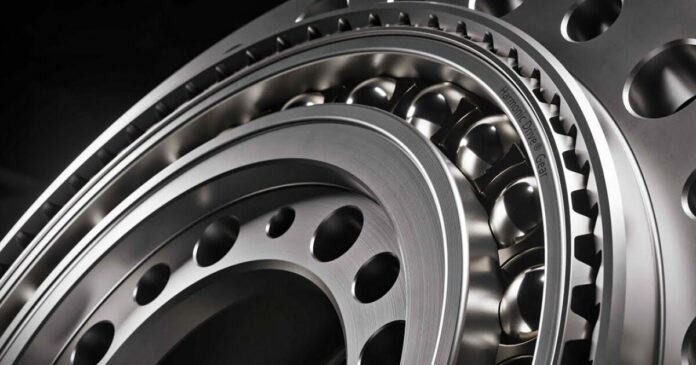Introduction to Harmonic Drive
The Harmonic Drive is a crucial component in numerous robotic applications, boasting an impressive torque-to-weight ratio and extreme precision. Despite its simplicity, the gear system’s unique wobbling motion can be puzzling to observe. So, how does it work?
The Genius Behind the Harmonic Drive
The Harmonic Drive gear is a masterpiece of engineering, with a flexible-ellipse-within-a-circle setup that creates a wobbling motion as it turns. This design allows only about a third of its two main gears’ teeth to be in contact with each other at any given point. The result is a compact, lightweight drive gear that delivers excellent torque with absolute precision and zero drive lash or free play.
History of the Harmonic Drive
The Harmonic Drive was first conceived in 1957 by C. Walton Musser, a prolific inventor with patents on various innovative ideas, including power steering systems, recoilless rifles, and pneumatic life jacket inflators. The Harmonic Drive was commercialized in the early 1960s and consists of three key components.
The Three Key Components
- The Wave Generator: A slightly elliptical input hub with a ball bearing race around its outer edge.
- The Flexspline: A flexible, cup-shaped component with teeth on its outer perimeter that deforms radially but retains torsional rigidity when the oblong wave generator is inserted.
- The Circular Spline: A completely rigid ring with internal teeth, similar to a planetary ring gear, and with two more teeth than the flexspline.
How it Works
When the wave generator spins, about 30% of the flexspline’s teeth on either end make contact with the circular spline’s teeth at any given time, forming an advancing wave pattern. This causes the flexspline to rotate within the circular spline, but in the opposite direction of the input.
Applications of the Harmonic Drive
The Harmonic Drive’s zero backlash, compact design, and high reliability make it ideal for various applications, including:
- Industrial robots, such as those from Fanuc and Universal Robots, for tasks like welding and assembly
- The da Vinci surgical robot, which relies on Harmonic Drives for delicate micro-movements with zero backlash
- Boston Dynamics’ Atlas humanoid and Spot Quadruped robots, which use Harmonic Drives in their arms and legs for smooth, controlled motion
- NASA’s Mars rovers, Curiosity and Perseverance, which feature Harmonic Drives in their robotic arms and wheels
Conclusion
Nearly 70 years after its creation, the Harmonic Drive continues to be a crucial component in diverse fields, from precise surgical movements to the exploration of distant planets. Its genius lies in its simplicity, reliability, and precision, making it an essential part of many robotic applications. With its unique wobbling motion and zero backlash, the Harmonic Drive has proven to be a remarkable invention that will continue to play a vital role in shaping the future of robotics and space exploration.

